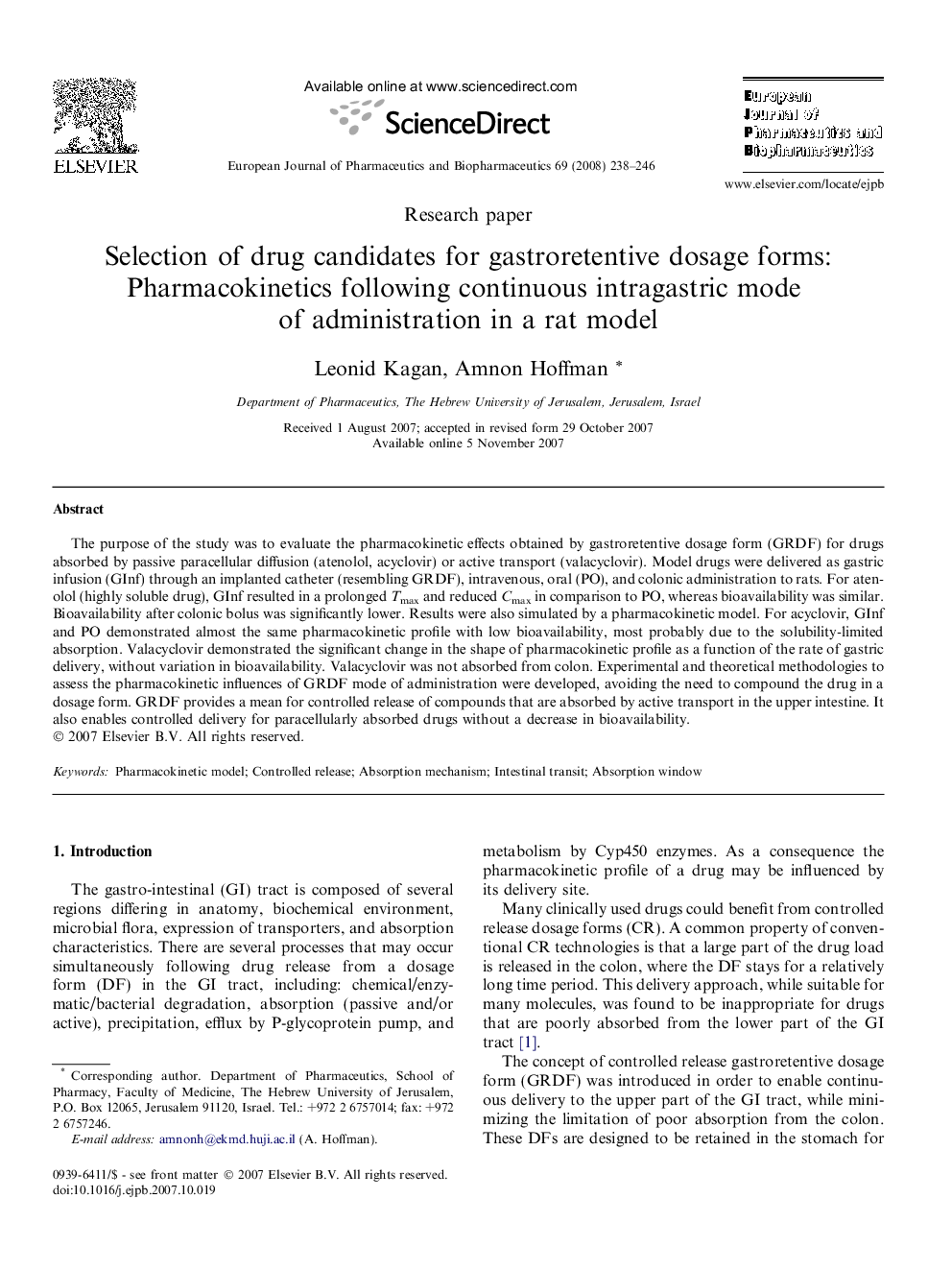| Article ID | Journal | Published Year | Pages | File Type |
|---|---|---|---|---|
| 2084790 | European Journal of Pharmaceutics and Biopharmaceutics | 2008 | 9 Pages |
The purpose of the study was to evaluate the pharmacokinetic effects obtained by gastroretentive dosage form (GRDF) for drugs absorbed by passive paracellular diffusion (atenolol, acyclovir) or active transport (valacyclovir). Model drugs were delivered as gastric infusion (GInf) through an implanted catheter (resembling GRDF), intravenous, oral (PO), and colonic administration to rats. For atenolol (highly soluble drug), GInf resulted in a prolonged Tmax and reduced Cmax in comparison to PO, whereas bioavailability was similar. Bioavailability after colonic bolus was significantly lower. Results were also simulated by a pharmacokinetic model. For acyclovir, GInf and PO demonstrated almost the same pharmacokinetic profile with low bioavailability, most probably due to the solubility-limited absorption. Valacyclovir demonstrated the significant change in the shape of pharmacokinetic profile as a function of the rate of gastric delivery, without variation in bioavailability. Valacyclovir was not absorbed from colon. Experimental and theoretical methodologies to assess the pharmacokinetic influences of GRDF mode of administration were developed, avoiding the need to compound the drug in a dosage form. GRDF provides a mean for controlled release of compounds that are absorbed by active transport in the upper intestine. It also enables controlled delivery for paracellularly absorbed drugs without a decrease in bioavailability.
